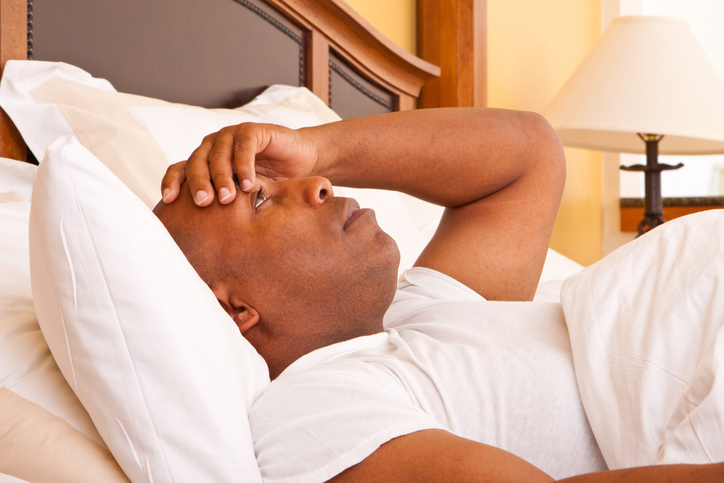Snoring and Sleep Apnea
Obstructive Sleep Apnea
 We offer a wide range of treatments for snoring and obstructive sleep apnea (OSA). Many people are aware of the impact of snoring, which can cause disruptive sleep for friends and family members of the "snorer," and in some cases even lead to interrupted sleep for the snorer. However, while snoring itself may be considered somewhat of a nuisance, it is also the most common symptoms of its more severe counterpart, OSA.
We offer a wide range of treatments for snoring and obstructive sleep apnea (OSA). Many people are aware of the impact of snoring, which can cause disruptive sleep for friends and family members of the "snorer," and in some cases even lead to interrupted sleep for the snorer. However, while snoring itself may be considered somewhat of a nuisance, it is also the most common symptoms of its more severe counterpart, OSA.
In patients with OSA, during sleep the breathing passages of the nose and throat repeatedly constrict, narrow, and even completely close off temporarily, interrupting the normal oxygen supply. People who suffer from this condition typically rouse repeatedly during the night to re-open air passages, and often have no memory of the repeated awakenings.
While minor cases of sleep apnea may simply interfere with quality of life -- causing those who suffer from it to get poor quality sleep and feel fatigued or unrested, even after a "full" night of sleep -- more serious cases are strongly associated with increased risks of high blood pressure, stroke and heart attack. Research indicates that OSA may be one of the most widespread chronic conditions in the United States, and that 80 percent of those cases or more go untreated.
Diagnosis and Treatment
Diagnosis
A diagnosis of OSA may be suggested by symptoms of snoring, morning headaches, daytime fatigue, and bed partner report of loud snoring and disrupted breathing at night. However, a definitive diagnosis must be obtained through a sleep study or polysomnogram. This test typically involves an overnight stay in a specialized testing center during which a number of physiological and neurological monitors are used during sleep to measure sleep stages, airflow, effort of breathing, blood oxygen levels, heart rate, and patient movements.
At VCU Health, we are lucky to have an exceptional Center for Sleep Medicine, staffed with board certified experts in the diagnosis and non-surgical management of sleep disorders of all kinds, including OSA.
Surgical Treatment
Surgical treatments are considered for patients with very specific and significant causes of airway narrowing, for example those with very large tonsils or deviated nasal septum, or patients who have not had success with other less invasive treatments for their sleep apnea. The goal of surgery for OSA and snoring is to enlarge and stabilize the airways in the nose, palate, tongue area or some combination of the three (often patients with more serious OSA suffer from narrowing and collapse in more than one area of the respiratory pathway).
Our otolaryngologists are experts in the evaluation of the breathing passages, and will work to identify potential causes of airway narrowing and determine the optimal surgical treatment when needed. Surgical treatment may include a variety of procedures performed on the nasal passages, palate or roof of the mouth, tongue, jaw, or voice box. With access to the most current research and most advanced technologies, our goal is to ensure that patients suffering from snoring or OSA are fully informed of their surgical and non-surgical options and fully supported in finding the treatment best suited to their condition, lifestyle and needs.
Inspire® Therapy might be right for you

Inspire® Upper Airway Stimulation (UAS) is an FDA approved treatment for people with moderate to severe OSA who are unable to use or get consistent benefit from CPAP. In contrast to CPAP, Inspire therapy works inside the body with a patient's natural breathing process. Based on these unique breathing patterns, the system delivers mild stimulation to key airway muscles. By stimulating these muscles, the airway remains open during sleep. Inspire is implanted during a short, outpatient procedure. Most patients return home the same day, and can resume non-strenuous activities within a few days or as directed by their doctor.
The Inspire® system consists of a breathing sensor lead and a stimulation lead, powered by a small battery. The therapy is controlled by a small handheld sleep remote. The remote allows the patient to turn the device on before bed and off when you wake up, increase and decrease stimulation strength, and pause during the night if needed.
Learn more about Inspire® Therapy
Download the VCU Health Inspire brochure or view the video below featuring Dr. Ryan Nord, a national Inspire® Therapy expert and educator, discussing this effective treatment for patients with sleep apnea.
Talk to an expert about your OSA
Call (804) 628-4368 for more information about OSA or to schedule an appointment with Dr. Nord.
Learn more about how the implant works by viewing this video by Inspire:
Non-Surgical Treatment
Patients diagnosed with OSA and those with snoring may have a number of non-surgical treatment options suitable for them. These include lifestyle changes such as altering sleep position, weight loss, oral splints, or continuous positive airway pressure (CPAP). CPAP is the current standard of care for OSA. Although it is often successful when used correctly and regularly, studies show about half of people given a CPAP machine are unable to use or get consistent benefit from it.

